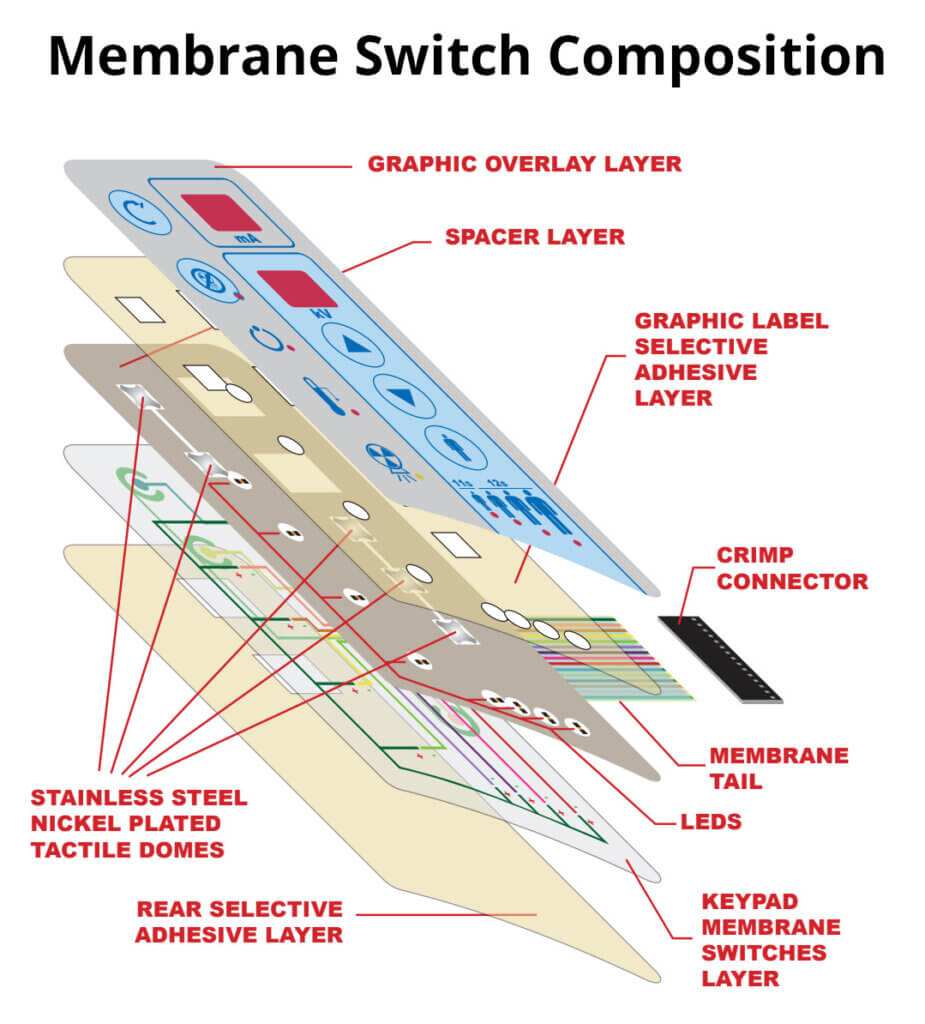Innovative Membrane Switch Solutions for Customized Control Panels
Innovative Membrane Switch Solutions for Customized Control Panels
Blog Article
Recognizing Membrane Changes: The Key to Long Lasting and Dependable Controls

What Are Membrane Layer Buttons?
Membrane layer buttons are a sophisticated service in the realm of individual interface modern technology, incorporating functionality and design seamlessly. These tools act as an interface between users and electronic systems, integrating several components into a compact format. Generally built from versatile, thin layers of materials, membrane switches are designed to respond to touch, enabling users to interact with machinery and digital tools properly.
The key components of a membrane layer button include a printed circuit layer, graphic overlay, and a spacer layer that prevents unplanned activation. The visuals overlay can be tailored to show brand identity or customer choices, improving looks while making certain functionality. Membrane switches are generally used in different applications, including clinical gadgets, consumer electronic devices, and commercial devices, owing to their longevity and resistance to environmental factors such as dampness and dust.
Among the essential advantages of membrane layer switches is their ability to withstand damage, making them suitable for high-traffic atmospheres. Furthermore, they are light-weight and need minimal room, enabling innovative layouts in product growth. Generally, membrane changes represent a reliable and useful selection for contemporary digital interfaces, weding technology with user-centric layout principles.
Just How Membrane Changes Job
The operation of membrane layer switches depend upon an easy yet reliable mechanism that equates customer input into digital signals. These buttons consist of numerous layers, generally consisting of a visuals overlay, a spacer layer, and a circuit layer. When a user presses the button, the top layer deforms, enabling a conductive component in the circuit layer to reach a matching conductive pad on the bottom of the graphic overlay. This get in touch with shuts the circuit and sends an electronic signal to the gadget, showing that the switch has been triggered.
The layout of membrane layer buttons can differ, but they typically integrate domes or responsive components to give feedback to the user, enhancing the overall experience - membrane switch. The materials utilized in membrane buttons, such as polyester or polycarbonate, add to their durability and resistance to ecological variables, consisting of dampness and dirt. The printed circuits are generally encapsulated, which protects them from wear and tear over time.
Advantages of Membrane Layer Buttons

Furthermore, membrane layer buttons are recognized for their durability. Constructed from robust materials, they are resistant to dust, moisture, and physical wear, which considerably prolongs their life expectancy compared to conventional mechanical switches. This sturdiness makes them especially appropriate for high-traffic atmospheres and applications needing longevity.
Another significant benefit is the convenience of cleansing and upkeep. The smooth surface area of membrane switches minimizes dust buildup and is usually unsusceptible spills, making them excellent for setups that need regular sanitization.
Furthermore, membrane buttons supply a structured profile, leading to a thinner layout that can be incorporated into various tools without including bulk. This attribute not just improves the aesthetic allure however also adds to a much more ergonomic product layout.
Applications of Membrane Layer Switches
Easy to use and versatile, membrane layer switches discover applications throughout a wide variety of markets, including medical gadgets, customer electronics, and industrial tools. In the medical area, these buttons are important to tools such as analysis tools, patient tracking systems, and mixture pumps, where integrity and convenience of cleaning are critical. Their capability to withstand extreme environments and keep performance makes them ideal for such applications.

In consumer electronics, membrane buttons are used in products like microwaves, washing equipments, and push-button controls - membrane switch. Their sleek design permits intuitive individual interfaces, boosting the total user experience while supplying durability and resistance to deterioration
Commercial equipment also benefits from membrane layer buttons, specifically in control panels for machinery and automation systems. These switches provide security versus dirt and dampness, guaranteeing constant efficiency in difficult settings. In addition, their customizable features allow producers to tailor them to certain functional demands, boosting performance and capability.
Picking the Right Membrane Layer Switch Over
When picking a membrane layer switch, it is important to take into consideration numerous aspects that affect Read More Here efficiency and suitability for details applications. The primary considerations consist of environmental conditions, tactile feedback, sturdiness, and design requirements.
First, examine the operating environment; buttons revealed to moisture, chemicals, or severe temperature levels call for details products to guarantee longevity and performance. Next, evaluate the requirement for tactile responses. Relying on individual interaction, some this hyperlink applications might gain from a tactile feedback to verify activation, while others may favor a non-tactile style for aesthetic factors.
Toughness is one more critical variable; membrane buttons ought to be designed to stand up to frequent usage, impacts, and abrasion. Make certain the chosen button can endure the anticipated lifecycle, particularly in high-usage situations.

Conclusion
In verdict, membrane layer switches serve as crucial elements in the style of dependable and long lasting control systems throughout various industries. The adaptability of membrane layer switches allows for tailored options that fulfill specific operational requirements, strengthening their value in modern technology.
Membrane changes represent an important facet of modern-day interface design, blending functionality with resilience in various applications.Membrane switches are an advanced service in the realm of individual interface innovation, integrating performance and style effortlessly. Commonly created from adaptable, slim layers of products, membrane layer buttons are created to respond to touch, allowing individuals to communicate with machinery and electronic tools properly.
The layout of membrane layer switches can vary, but they often incorporate domes or responsive components to supply comments to the individual, boosting the overall experience.In conclusion, membrane switches over offer as vital elements in the layout of trustworthy and long lasting control systems across numerous sectors.
Report this page